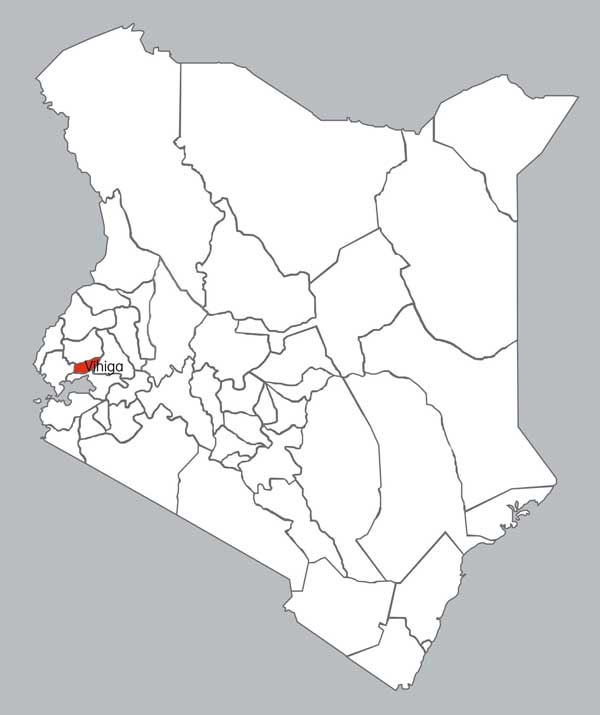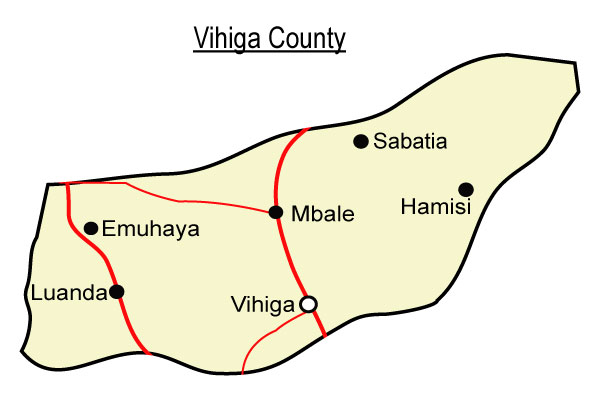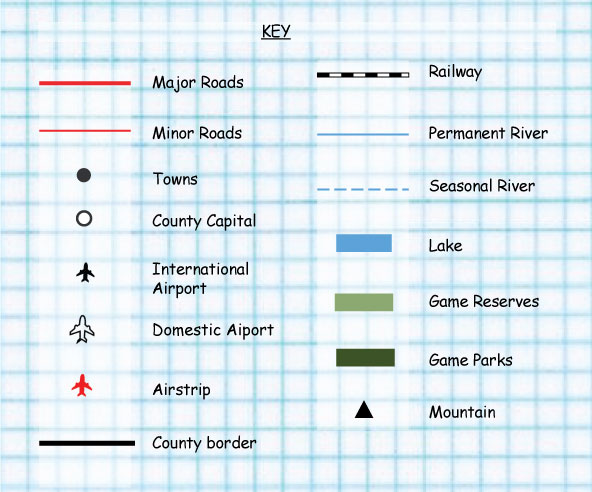It is from the former Western Province of Kenya, its headquarters is Vihiga which is the largest town in the county.
The county has a population of 554, 622 according to 2009 census Vihiga County was split from Kakamega County in 1990.

Rivers
Lakes - Vihiga has no lake
Hills
Importance of the physical features
The main types of natural the vegetation


Maragoli are the dominant ethnic group in the area and the town is also known as Maragoli. Tiriki, Idakho and Banyore are other ethnic groups in this locality.
Areas of high population density
Areas of low population density
Food
Dressing
Songs and dances
Song and dance was mainly during special occasions. These occasions were:
There were unique songs and dancing styles for each occasion
Traditional medical practices
Traditional medicines like herbs were used.
Ceremonies
Children are named after the clan's ancestors, or after their grandparents, or after events or the weather. The paternal grandparents take precedence, so that the first-born son will usually be named after his paternal grandfather (Guka/Guga), while the first-born daughter will be named after her paternal grandmother (Guku).
The Maragoli did not practice clitoridectomy, they only practiced male circumcision.
Circumcision was a period of training for adult responsibilities for the youth. Circumcision was carried out every four or five years, depending on the clan. This resulted in various age sets
Festivals
They had special songs to mark this special event. Men and women danced to after a good harvest. Any child being born at this time was given a special name to show they were born during this season.
Music was used to mark special occasions these were circumcision, harvest, initiation and marriage
The main cash crops and food crops grown
The areas where the cash crops are grown
The types of livestock kept
Fishing is not an economic activity in this county only small local fishing is possible along rivers.
The products of traditional industries
Trade
Major trading centres